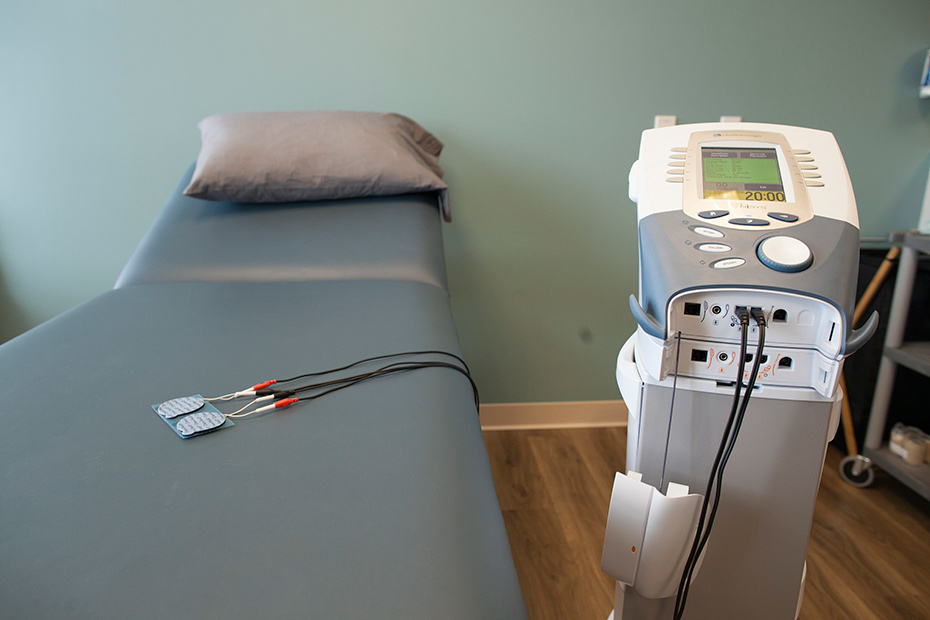
I’m not going to lie. I get SO frustrated when I meet people, or run into friends that haven’t the slightest clue what I do. And I am not even frustrated with them, as much as I am frustrated with the system and how little education there is about what physical therapy is, and the benefits of it. There are STILL medical doctors (even orthopedic surgeons) that fail to refer appropriate candidates to physical therapy, and instead, prescribe a medication, injection, or surgery (all with more side effects, and more invasion than PT). There are still patients post-surgically who are not being referred to physical therapy, and are given a 3 page worksheet of exercises to do on their own – without proper instruction on how. Maybe that sheet of low-level activities works for 10% of the population, but for the rest of us, those exercises are just a taste of what we need to do to return to our prior level of function, or even better (which is what most of us want, right?). To make light of these frustrations, I have laid out a few of the most common misconceptions below
“Oh, you’re a physical therapist – you do massage right?”
Actually, no. A massage would come from a massage therapist. I am a physical therapist. Yes, I use manual therapy techniques (i.e. joint mobilizations, instrument assisted soft-tissue mobilizations, cupping, active release techniques, etc), but to serve a purpose aside from an hour of relaxation. While I may even use manual therapy initially to help relax the soft tissue or manage pain and develop rapport with a patient, it is most often followed with active or passive movements, followed then by exercise!

physio2

massage
“I did PT once. They did heat and stim (often read: “stem”) on my back”
*Palm to face*. Heat and electrical stimulation have a time and place, but shouldn’t be the only thing you recall from your weeks of PT. Heat (most often, moist heat) is used to promote circulation, and soothe stiff or achy tissues and joints. E-Stim is most frequently used for pain management by blocking the “gate” by which pain signals pass to the brain. However, neither of these modalities will “fix” your injury. That takes time on the part of the physical therapist AND the patient.

estim
“I went to physical therapy but they didn’t “fix” my problems”
If you are 50lbs overweight and want to get back in shape, but you only eat two healthy meals per week and you exercise 1-2x per week, how long do you think it will take to get to your goal weight? Especially for non-acute injuries, if you come to PT 1-3x/week for 3-6 weeks, you are spending 3 hours out of 168 hours in a week, addressing your pain, movement, strength, etc. If you spend those THREE hours (a week) doing exercises, let’s say, to promote improved posture, but then proceed to go spend 8 hours A DAY sitting in your office chair without practicing any of the exercises or transferring any of your new knowledge to your daily activities, what kind of outcome do you think you will have? My guess is that your progress will be slow. You negate any positive progress by not taking the time to practice what you have learned on a daily basis. Physical therapy takes a commitment on the behalf of the therapist, AND the patient. If a doctor tells you to take a prescription medication 3x/day for the next 3 weeks, you do it, right? Why wouldn’t you listen to a Doctor of Physical Therapy who is prescribing you exercises that will help to correct a cycle of movement that is causing you pain.

theraband
“I went to physical therapy but was seen by a tech most of the time and there were so many people that I didn’t even know if I was doing the exercises the right way”
Unfortunately, this statement is often times not a misconception, but a sad truth. With the state of our health care systems, many insurance based outpatient clinics (and even doctors offices) must see a very high volume of patients in order to make ends meet. When an insurance company contracts with a clinic to be “in-network”, they negotiate particular discounted (read: HIGHLY discounted) rates in exchange for an increase in referrals (free marketing by being listed as a provider on their website). Because reimbursements rates are so low, AND insurances look for any reason to deny claims, clinics are more or less forced into seeing a high volume of patients to make sure they can pay the bills. Quality of care decreases because a system like this cannot support a model in which the quality of patient care comes first. This isn’t to knock the clinics out there that do accept insurances, it is just one of the obstacles that such clinics have to navigate.
The REALITY is that physical therapists are meant to clinically diagnose injuries and movement patterns and treat them by teaching and assisting you in moving more efficiently and understanding your body. Regardless of setting, our goal is to help our patients move better, and by doing so, increase their quality of life. We are educators. We are thinkers. We are problem solvers. We see a patient with back pain and we look not just at their back, but their posture, their hips, their ankles, etc. We prescribe movement over medicine (which often times is used to treat or mask the symptoms and not tackle the cause), and the modalities we use are complimentary to the movements and exercises we teach. The goal of a great physical therapist is not to “fix” you, but to assist you in “fixing” yourself. We are here to jump start your journey to a pain-free, unrestricted YOU, and teach you the tools and skills you need to make it happen. The REST is UP TO YOU!

physio
Not sure if physical therapy is right for you? Interested in receiving more information or want to talk about an injury you are currently dealing with? Email me (arienne@doctorarienne.com), or shoot me a comment below!
Cheers,Dr. A

